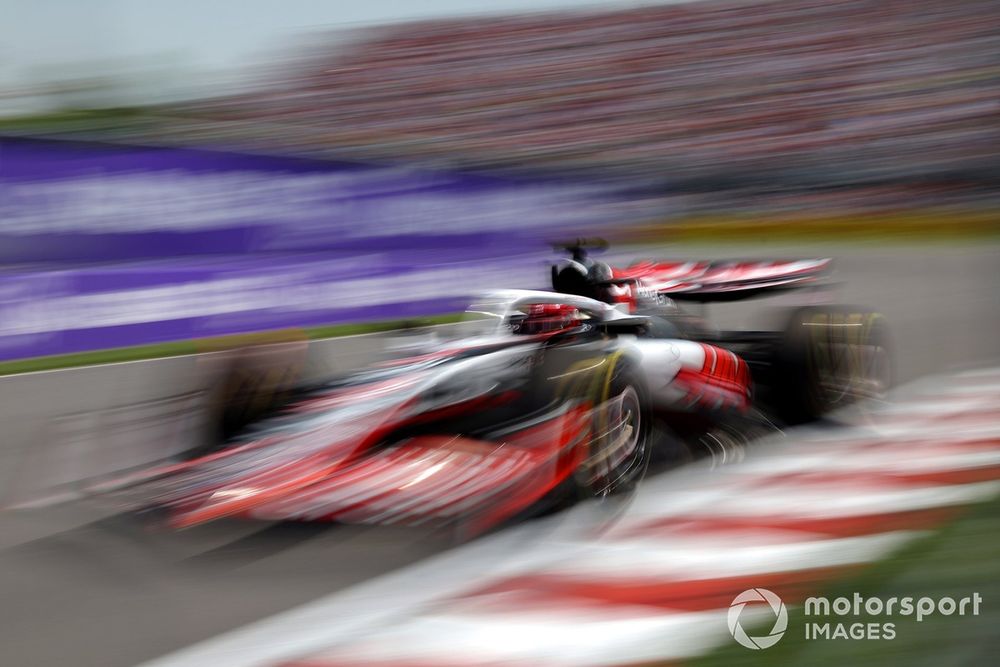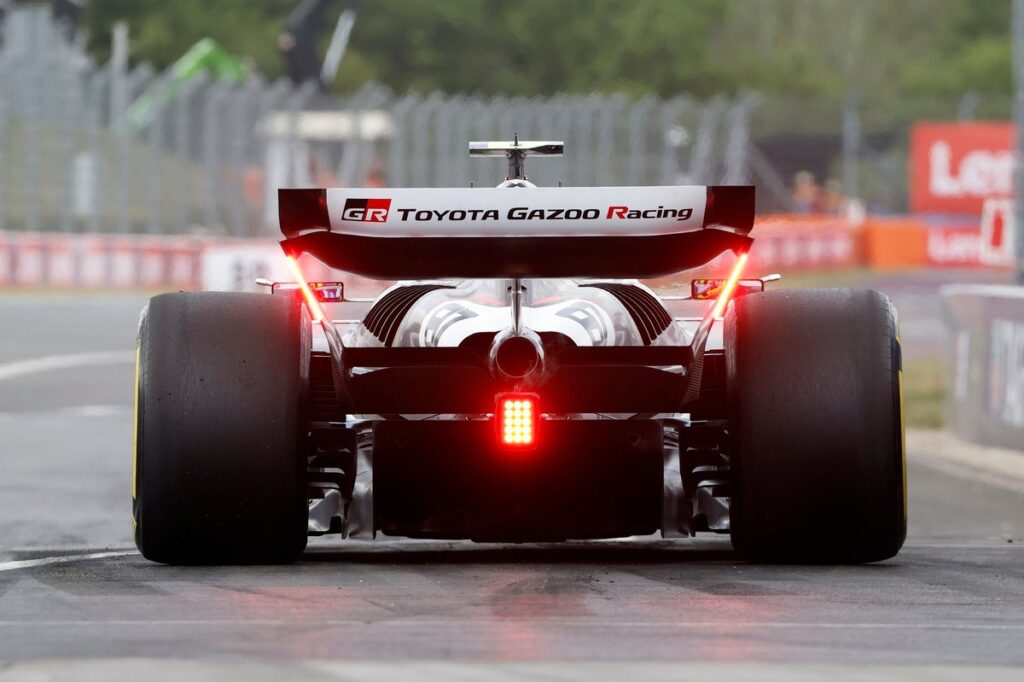Last October, Haas and Toyota announced a partnership in which they would “Share Knowledge and Resources for Mutual Benefit”. A generous portion of corporate word salad, but lacking in substantive detail.
It soon became clear that one of the new partnership’s priorities was to develop a new driver-in-loop simulator, a critical piece of infrastructure Haas currently lacks. Not only do these enable competitors to arrive at a baseline mechanical setup before arriving at a track, they can also be used to evaluate alternatives while a race weekend is in progress.
And as F1 gears up to a new ruleset in 2026 featuring active aerodynamics, narrower cars and greater electrical power deployment from the powertrain, the simulator will become an essential driver coaching tool.
“It [power unit management] is so interlinked, much more so than up until now,” Haas team principal Ayao Komatsu told select media including Autosport.
“Driver operation has much bigger consequences, good and bad, because of the limitation on energy recovery and deployment. So it is very, very important.”
Ayao Komatsu, Haas F1 Team
Photo by: Peter Fox / Getty Images
The problem for Haas is that it is still reliant on using Ferrari’s simulator while its new one comes together in its Banbury HQ. This is sub-optimal for many reasons, and not just because of the cost implications of additional travel in the budget-cap era.
It is limited for time in the Ferrari simulator, and the process requires input from the team’s trackside engineering personnel, which involves more time away from home for people who already attend up to 24 races a year.
Toyota has a simulator in its Cologne facility but using this would involve the same practical challenges. What Haas gains from working with Toyota is fast-tracking the building and commissioning process: a simulator has specific architectural and power requirements in terms of the building that accommodates it, the hardware itself is very specialised, and achieving correlation between simulation and real-world performance is both challenging and time-consuming – hence Komatsu’s description of the sim as “definitely one of the top-priority items we [Haas and Toyota] are working on”.
Earlier this year, new Aston Martin ‘managing technical partner’ Adrian Newey said openly that his team’s new simulator was “weak” and “not correlating at the moment”. This summer he hired his former Red Bull colleague Giles Wood to take charge of simulation and modelling.
“Definitely, we are behind,” said Komatsu, “but we’re not blind to it.
“Of course, we’re trying to put it in place. So the simulator is coming, but it’s not there yet.
“In terms of next year’s preparation, definitely that’s a disadvantage for us, but that’s the reality. We’re trying to move as quickly as possible to put that in place, but we’re not there yet. But certainly it’s a big factor for next year.”

Esteban Ocon, Haas F1 Team
Photo by: Glenn Dunbar / Motorsport Images
The challenge Haas faces is that the simulator is unlikely to be ready for use until next year – Komatsu says Q2 is “optimistic”. So while the benefits will play out in the long term, Haas will have to gear up for 2026 with its present arrangements.
“In terms of 2026 preparation, we are very much still on what we’ve got now, with us using a Ferrari simulator,” said Komatsu.
“That’s a limitation for sure. I’m not saying anything bad against Ferrari simulator, but just in terms of location, access, amount of hours we can do, cost effectiveness, etc. Cost, if you have it in-house, it’s much better.
“This PU [power unit] is a huge challenge in terms of energy recovery, deployment. That means a driver is completely in that loop. Then the simulator plays a much bigger role.
“That’s the area we are behind.”
In this article
Be the first to know and subscribe for real-time news email updates on these topics
Read the full article here

